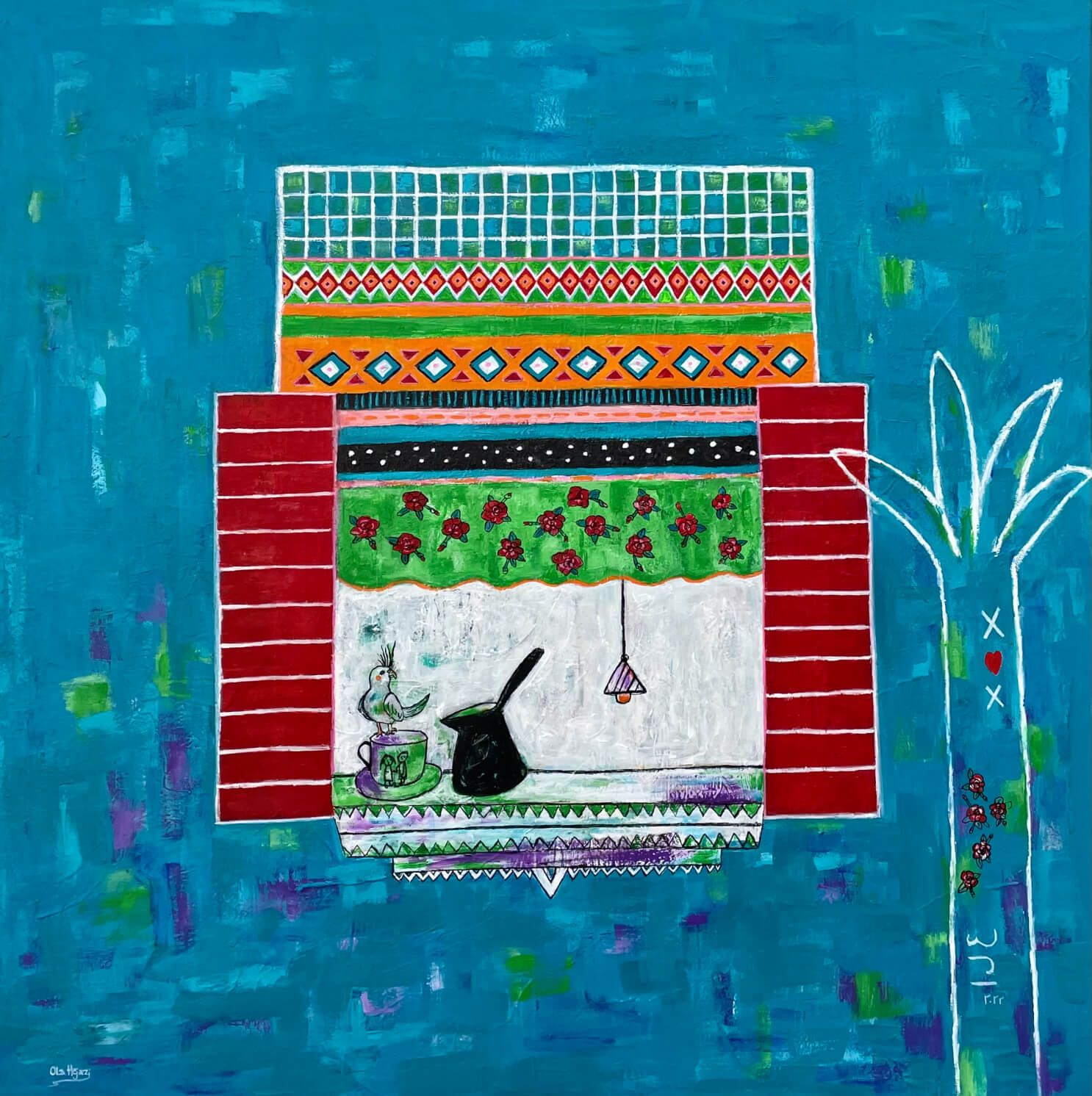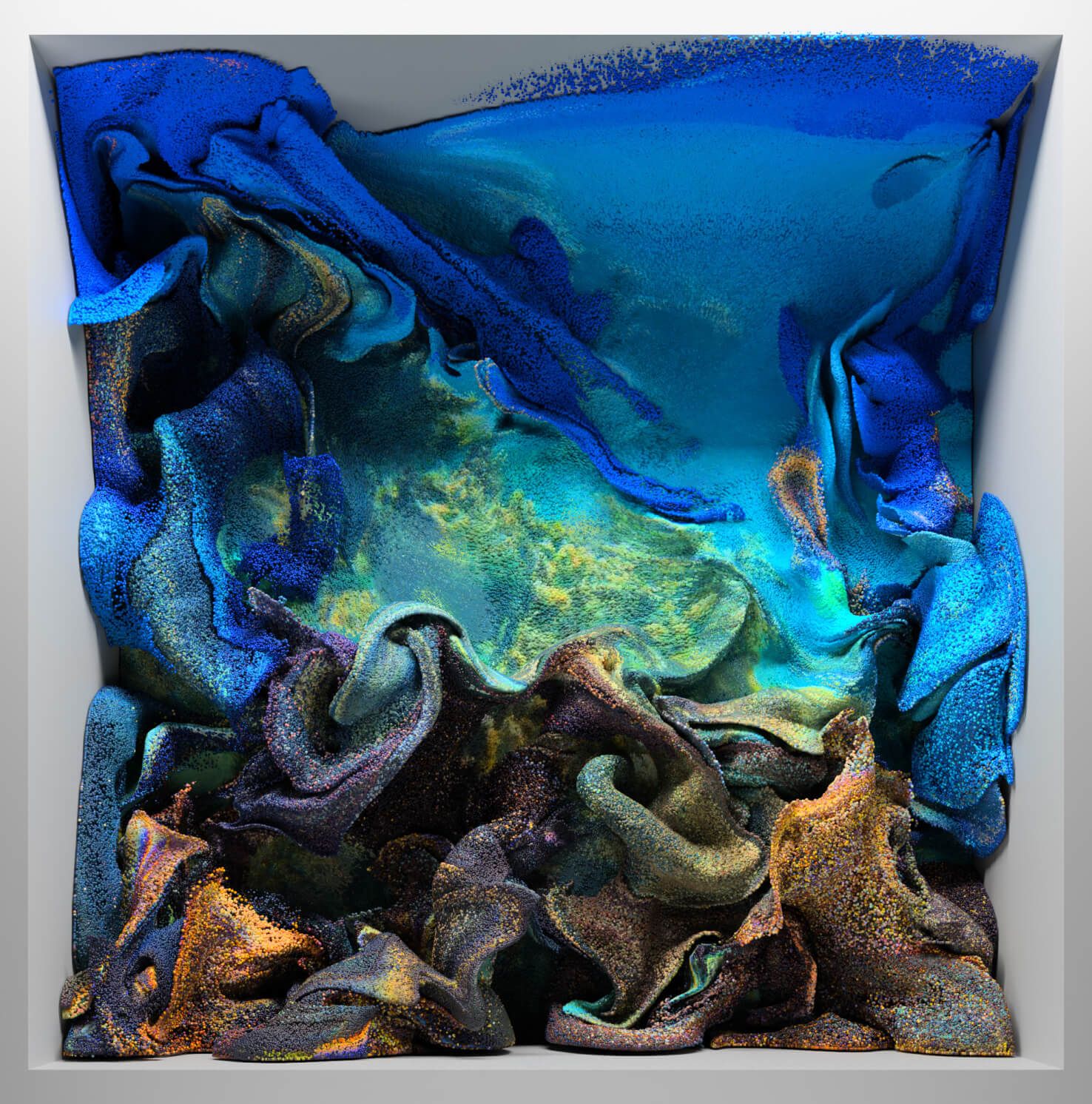The Art of Re-set
Machine Hallucinations, Nature Dreams, by Refik Anadol. Courtesy of the artist.
As 2022 comes to an end, we reflect over the year and its ups and downs, and welcome the new year 2023 and what possibilities and opportunities it may bring.
In its 19th edition, Ithraeyat celebrates this moment of reflection through its theme of ‘re-set,’ giving us all a moment to reboot, readjust and rest as we begin new chapters.
The power of art to give us joy, reduce our anxiety, and tackle burnout and trauma is explored in this edition via interviews with art therapists, and artists who gift us art that embraces and restores our sense of self and wellbeing.
There is something for everyone in this special edition. From the beautifully immersive and dream-like cover art by the renowned artist Refik Anadol, to the insights of Dalya Mousa, Director of Arts at Diriyah Gate Development Authority, as well as the art of giving back and ‘hope’ by dynamic artist Joel Bergner. For those thinking of trying their hands at gardening, enjoy reading the interview of the gentle ‘art of gardening’ by avid garden educator Alzainah Al-Babtain. Meanwhile those needing a bit of quiet can revel in the creation of ‘silent rooms’ that multidisciplinary artist Nathalie Harb is trying to introduce in cities. Then there is the power of light from Noor Riyadh as captured in the column by curator Gaida Al-Mogren.

Re-imagined Hosn, a place of serenity and culture, by Husain Al-Hashmi. Courtesy of the artist.
How art has helped through difficult times can be explored in the writings of artist Dr. Haya Al-Hossain; through the delicate philosophical art revolving around birds, migration and the journeys within by cross-disciplinary artist Doa Bugis; and in how we can all find joy in the mundane as shown by artist Hoda Zohrob.
We travel to wonderful Abha in the ‘Our Cities, Our Stories’ section with artist Hatem Al-Ahmad, then to Jordan with our latest partner Wadi Finan Art Gallery to meet Syrian artist Besher Koushaji and explore his nostalgic art of flowers and memories. We also understand the healing power of art by meeting two art therapists, Dr. Abdulaziz Al-Duqail and Alaa Naeem.
We enjoy a moment of pause as we appreciate the depth of the latest art collection shared by our esteemed partner Barjeel Art Foundation. We also gift our wonderful readers online resources that we hope will bring a bit of joy and rest into their lives, where a simple act like deep breathing can actually make a difference.
But let us not forget the art of music, and its power to inspire, to re-set and to heal.
With the legendary composer and musician Johann Sebastian Bach (1685 – 1750), an ancestor through my mother, classic musical pieces like ‘Air’ have always been one of our anchors that helped us find our center and readjust our compasses. Extensive research has shown that music does have the power to heal, and Middle Eastern composers and philosophers played a crucial role in the development of music as a modern therapeutic tool.
The ‘Hijaz Maqam’ for instance — a specific oriental musical scale — has a greater range of microtones than the western scale and therefore helps to give the music a greater evocative power. Al-Kindi — known as the father of Arab philosophy — was the first great theoretician of music in the Arab-Islamic world, and is said to have coined the term "musiqi," while another, Al-Farabi (known in the West as Alpharabius) wrote five books on music – one of which is Kitabu al Musiqa al Kabir (the Great Book of Music).
I leave you with Al-Farabi’s words: “Sounds, in the diversity of their tones, cause in the person that listens to them such shades of feelings or passions, raising to him, controlling to him or tranquilizing to him.”
So please take a moment for yourself to read, to see the art, and to listen to music that you like as you go about your day.


